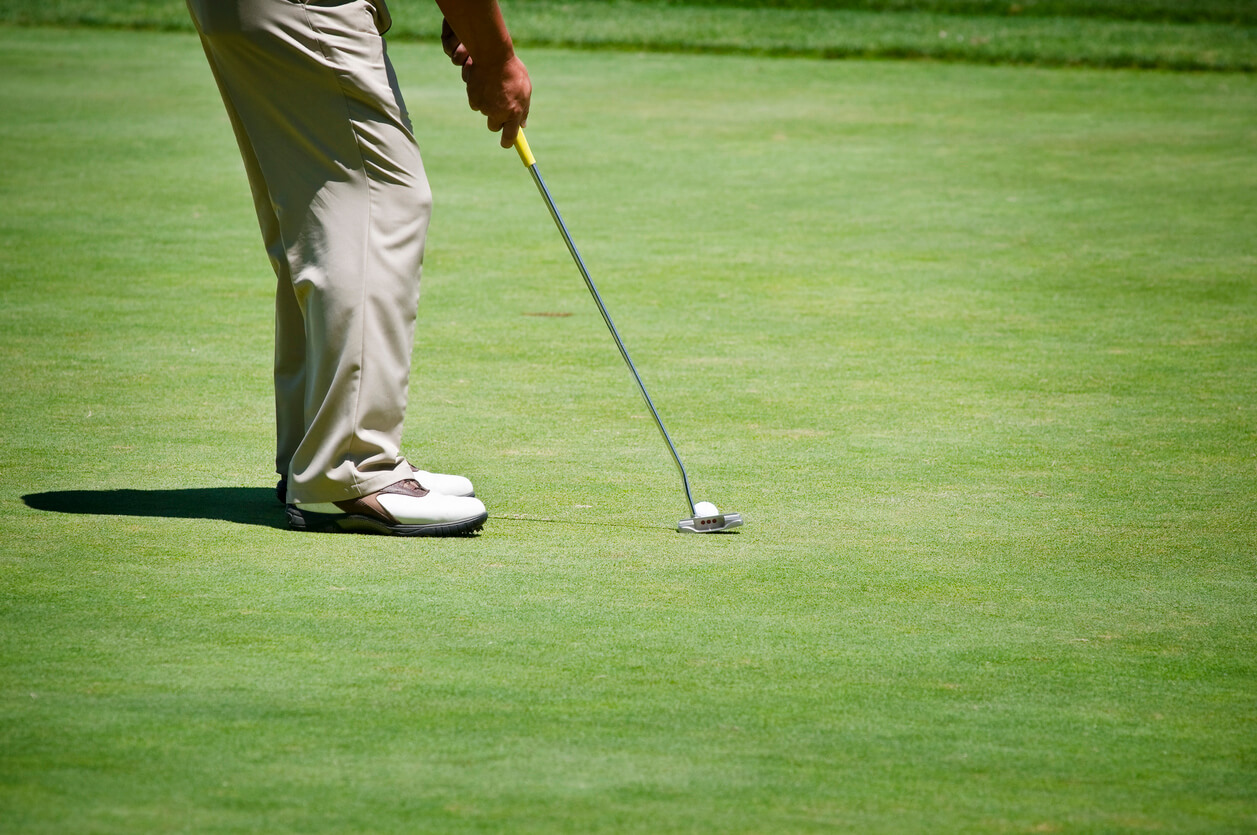
The putter is used far more often than any other club: 30-40 times per round for the average amateur. So it’s well worth spending some time considering whether the putter you’re currently using is absolutely right for you, or if there could be a magic wand out there that could transform your game!
Over the years manufacturers have produced countless styles of putter, from the minimalist like the Acushnet “Bullseye” or Wilson “8882” blade, to the space-aged like the Scotty Cameron “Futura X” or TaylorMade’s “Ghost Spider”. The type of putter that will suit you will depend on: what best fits your eye, what type of stroke you make and, simply, what feels best in your hands.
Here we take a look at some of the variations between putters and some of the best examples on the market – all the information you need to get the right putter and shave strokes off your score.
Face or toe-balanced weighting?
Fundamentally, there are two key weighting options with putter heads – face balanced or toe balanced. To tell the difference, lay the putter shaft across the palm of your hand. If the putter face points towards the sky, the putter is face balanced. If the toe of the putter head points towards the floor, it’s toe balanced.
These different weightings are designed to suit different putting strokes. If you aim to make a square stroke – with the putter face square to the target on the way back and on the way through – then you will benefit from a face balanced putter. If your stroke has more of an arc to it, i.e. the putter face opens slightly on the way back and closes on the way through as the stroke curves, you will be better off with a toe balanced putter.
PING, a company renowned for innovations in putting, gives clear guidance on which of its putters are best suited for a “straight” or square stroke, a “slight arc” and a “strong arc.” For example, PING’s Anser 4 blade is designed for a player with a strong arc to their stroke, whereas their centre-shafted, semi-mallet the Piper C is for those with a straight stroke.
Mallet or Blade?
This is very much down to individual taste and what suits your eye. In the main, mallet putters tend to be face balanced and will, generally, suit a straighter stroke. Feel putters with an arc stroke might opt for a blade, but these rules are by no means set in stone.
Scotty Cameron’s “Newport” bladed putters are favourites with the pros, and fans of a more traditional style. Odyssey produces superb putters of all types, but are perhaps best known for their iconic mallet – the “2-ball.” Two ball-sized circles behind the face greatly assist in alignment.
What about the weight?
Again, this is a very personal choice. Some might prefer a heavier head to do the work for them. Others favour a wand that feels lighter in the hands and requires more impetus from the stroke.
On slower greens, many will swap to a heavier putter to help get the ball to the hole. On the flip side, a lighter putter may be beneficial on quicker putting surfaces where a more delicate touch is required.
For those seeking a heavier putter, Odyssey produces a range called “Tank.” These clubs feature a 400-gram head (some 50 grams heavier than standard) as well as a heavy shaft and a counterbalance weight in the grip.
Many manufacturers produce putters with adjustable weights, allowing you to alter the head weight depending on the conditions. TaylorMade’s Ghost Spider mallet putter offers such versatility.
And the length?
Standard putter lengths are between 33 and 35 inches. What suits you best will depend on your height, the length of your arms in relation to your body and how tall you stand when you putt. The distribution of weight in the shaft and the head will vary slightly depending on the length, so it’s not a good idea to cut a putter down, or add length to it, without considering how this alters the feel.
Longer putters have become popular in recent years: “Belly putters” that reach the midriff of the user, or even “Broom-handles” that reach as high as the chest or chin. These can help those who get twitchy on the putting surfaces. But take heed: as of January 2016, it will be illegal in competition to anchor your putter to the body – so no ramming it into the belly or clamping it to the chest.
As an alternative, many manufacturers now produce counter-balanced putters – longer (at 38 inches or so) and with a weight in the end of the grip to replicate the feel of a pivot-style belly putter.
So, there are many different variables to consider when selecting a putter, but there’s one very simple benchmark that overrides all the others: Does it help you hole more putts? If you find a “wand” that does this, then you’re on to a winner.
Specialist golf insurance through Golf Care
If you’re heading to the course any time soon, you might want to consider specialist golf insurance to protect both yourself and your equipment. Find out how golf insurance can help you by clicking the link above, or get an instant online quote today.
Get a quick quote for Golf Insurance
Get A Quote